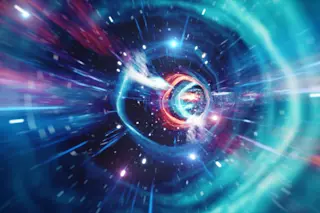Even educated people can be surprisingly reluctant to accept simultaneous events as coincidence. Say lightning strikes the church steeple just as old Aunt Mildred dies. Many will see a mystical connection between the events rather than view them as a weird but statistically plausible chance occurrence.
Coincidences are fun and fascinating, but they make scientists nervous. Case in point: the Andromeda galaxy. This nearest of all spiral galaxies could have had any size at all. In fact, Andromeda is the biggest and brightest within 50 million light-years of Earth. Astronomers, suspicious of what later turned out to be mere coincidence, initially doubted their distance measurements to the galaxy. We want our neighborhood to represent the universe, not be populated by oddballs.
Space, empty as it is, is crammed with coincidences. We gaze into a sky that displays only two disks, sun and moon, that just happen to appear the same ...














